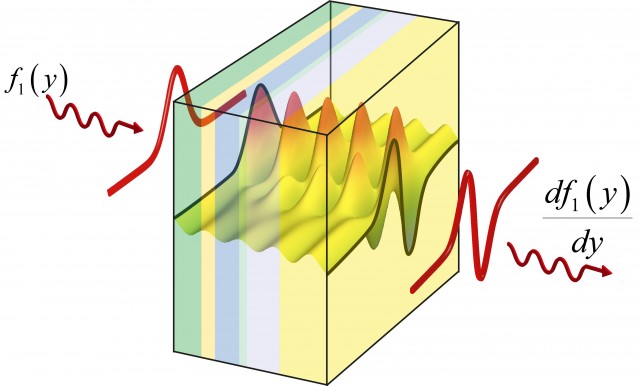Metamaterials could perform calculus with light waves
Ars Technica » Scientific Method 2014-01-10
Our recently developed ability to structure materials at nanometer scales has led to a variety of applications, but few of them have made geeks as excited as they are about cloaking devices. Although still fairly limited, these cloaking devices rely on what are termed metamaterials—devices that are structured so that they can manipulate light, bending it in unusual directions. Now, researchers have determined that it should be possible to create metamaterials that can take lightwaves and perform calculus using them.
Although the paper is entirely theoretical—no actual devices were constructed or nor were any light waves bent—simulations using the properties of materials we know how to work with, like silicon, indicate that real world devices should perform almost as well as virtual ones.
The authors of the paper describing these metamaterials say they were inspired by analog computers. Earlier mechanical computers could do things like continuously update as the values they worked with changed—examples include the geared fire control computers that gave the US Navy a huge advantage in World War II. But, compared to digital computers, the analog forms tended to be bulky and overly specialized, so they were quickly dropped as advances were made on the digital versions.
Read 6 remaining paragraphs | Comments
